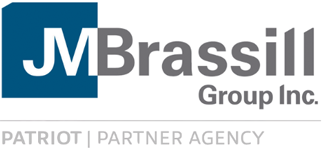 Selecting the right health insurance plans for your family is a critical process that requires careful attention from start to finish. Navigating health insurance becomes much simpler when you understand its terminology. Making sense of these terms empowers you to better understand your costs, benefits, and even estimate the price of a doctor’s visit.
Selecting the right health insurance plans for your family is a critical process that requires careful attention from start to finish. Navigating health insurance becomes much simpler when you understand its terminology. Making sense of these terms empowers you to better understand your costs, benefits, and even estimate the price of a doctor’s visit.
Premium: Your Insurance Payment: The premium is the regular payment you make to an insurance company to maintain your coverage. When you get insurance through your employer, they will specify how much of the premium you are responsible for, and this amount is typically deducted from your paycheck before your taxes are calculated.
Copayment : A copayment, often called a copay, is a specific amount you pay for a covered healthcare service, and it’s usually due when you receive that service. The amount of the copay can be different for different types of care.
Copay Example: For her son’s pediatrician visit for the flu, Heather had a $15 copay that she paid at the time of the appointment.
Deductible: A deductible is the amount you pay for healthcare services each year before your insurance starts covering costs.
Deductible Example: Ashley has a $1,000 annual deductible. Her first arm surgery costs $800. Since she hasn’t met her deductible yet, she pays the full $800.
Coinsurance: Coinsurance is the percentage of the allowed cost for a covered healthcare service that you’re responsible for paying after you’ve paid your deductible.
Coinsurance Example: Ashley’s next surgery costs $3,200 (the allowed amount). She has already paid $800 of the $1,000 deductible so she is responsible for the first $200 of the second surgery. Her insurance has an 80/20 coinsurance split. This means they pay 80% ($2,400), and Ashley pays 20% ($600).
Out-of-Pocket Maximum (OOPM): The OOPM is the maximum amount you’ll pay for covered healthcare costs in a year, not counting your monthly premium. It acts as a financial safety net against very expensive medical care. After you reach your yearly OOPM, your insurance pays 100% of covered costs for the rest of the year. Be aware that some plans have rules about what expenses count towards your OOPM; for instance, some might not include your deductible.
OOPM Example: Ashley has a $3,000 out-of-pocket maximum and has paid $1,600 so far. Her next surgery costs $8,000. She will pay her 20% coinsurance until her total out-of-pocket reaches $3,000. She has $1,400 left to pay. After that, her insurance covers the remaining $6,600.
Preventive Care: Preventive care focuses on staying healthy and catching illnesses early. It includes medical tests, vaccines, screenings, and medications designed to prevent chronic diseases. The goal is to identify and treat health issues in their most manageable stages. Under the Affordable Care Act (ACA), most health insurance plans must cover a range of preventive services without charging copays, deductibles, or coinsurance.
Preventive Care Example: Lori makes an appointment for her yearly check-up and a mammogram with a doctor in her network. Since these are preventive services covered by the ACA, Lori pays nothing – her health insurance covers the full cost.
Other Benefits Terminology
Pre-existing Condition: This is any health issue (physical or mental, including disabilities) you had before your health plan started. Since 2014, most insurers can’t deny coverage or charge more for pre-existing conditions, unless you have a “grandfathered” plan.
Grandfathered Plan: This is a health plan that existed before the ACA (2010) and hasn’t changed much since. These plans don’t have to follow all of the ACA’s rules.
Summary of Benefits and Coverage (SBC): The SBC is a straightforward document that outlines the costs and coverage of a health plan in an easy-to-compare format.
All those healthcare acronyms and terms might seem overwhelming but taking the time to learn them can put you in control. Understanding the lingo makes it easier to pick a health plan that meets your individual needs and budget!



